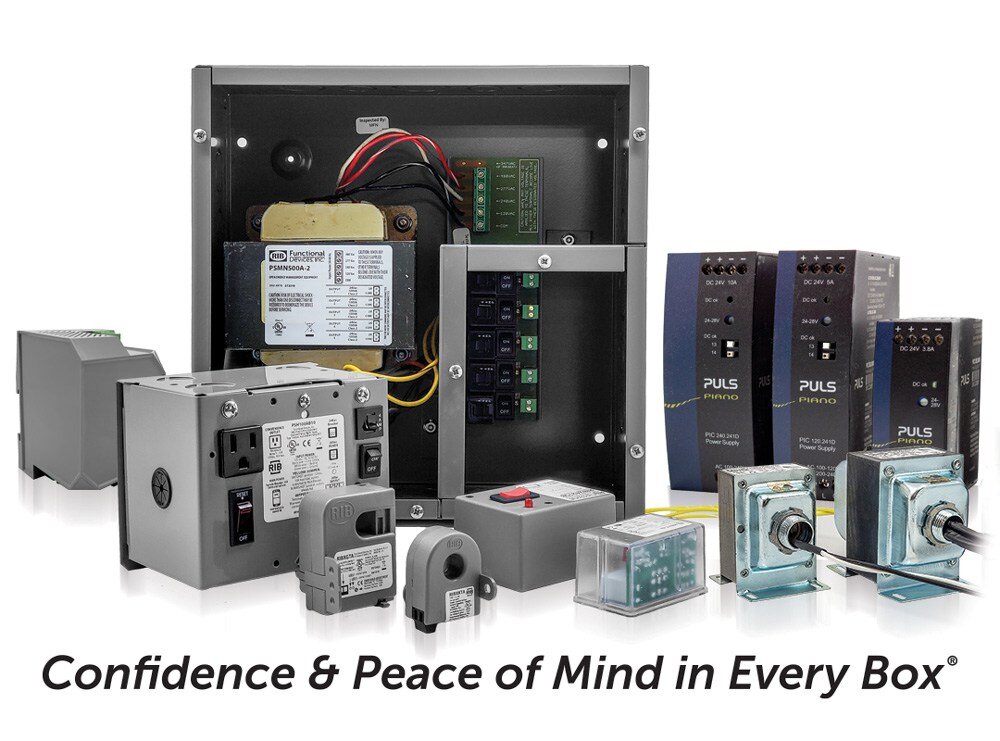In some settings, even a moment of electrical failure can spell disaster. These mission-critical environments demand reliable and safe power to run HVAC, lighting controls, fire safety, security, and other automated systems 24/7. And what helps provide that necessary dependability? Advanced mission-critical relays.
Relays have come a long way from basic switching. Today’s technologies utilize intelligent and specialized features that boost safety, uptime, and system integrity. Explore why upgrading to advanced relays is essential in critical applications and how they ensure dependable operation.
At Functional Devices, relays are our bread and butter. Our proprietary “Relay In a Box®” comes prepackaged for easier installation and lower cost. Versatile and efficient, our models work for a wide array of applications, including HVAC, lighting controls, energy management, and more. Learn more about the options.
The High Stakes of Mission-Critical Systems
Mission-critical systems (also referred to as mission-critical, safety-critical, or high-performance relays) are the definition of high stakes. Without constant operation, serious issues will arise. In these types of environments, reliable and fail-safe operations are non-negotiable.

Think of a hospital running vital life support equipment, a banking system accessed by millions of people, or a data center storing sensitive information. Downtime in any of these scenarios leads to significant problems; therefore, it’s crucial that the devices within a building’s systems continuously perform safely and dependably.
Key Features of Advanced Relays That Enhance Safety and Uptime
Safe, reliable, and constant uptime is the name of the game with mission-critical systems. As these systems have evolved with modern technologies to meet the new demands of critical environments, so have relays, transforming from basic switches into advanced versions with intelligent system components and special features.
Relays designed for critical applications have key characteristics that set them apart from standard or older types. These features may include:
- Hermetical seals and metal enclosures protect against electromagnetic interference, damage, moisture, or extreme temperatures.
- Arc suppression mechanisms prevent overheating and contact erosion.
- Different silver- or gold-alloy contact materials improve performance, durability, and reliability.
- Double-break contacts provide a redundant contact path.
- Quick response time improves performance, detects abnormalities, and ensures implementation of proper safety measures.
- Positive mechanical keying ensures a strong connection and allows for easy maintenance.
- Smart features supply real-time insights, enable automated and remote control, and enhance reliability.
- Zone-selective interlocking and breaker trip circuit monitoring minimize the risk and impact of faults on the system.
These features will vary depending on the relay and what the mission-critical environment requires. Generally speaking, these advanced relays are engineered to reliably, quickly, and safely work continuously over a long lifespan. Furthermore, if they’re smart, they self-monitor, providing much-needed health status indicators so facility managers know exactly when to perform maintenance or replace components.
HVAC, Lighting Controls, and More: The Systems That Rely on Relays
Despite the rise of digital and software-based controls, relays will continue to play an essential role in demanding environments because of their ability to switch high-power circuits with low voltages, isolate electrical loads with minimal input power, and provide reliable automation and safety mechanisms. Additionally, they aren’t as susceptible to electrical failure as digital systems are and can withstand harsh environments while performing dependably.
We’ve already touched on some industries that depend on advanced relays, but let’s get a little more specific with systems. Here are some applications within building systems where you’ll find mission-critical relays:
- HVAC. Relays for compressor control, fan switching, and failover management
- Fire safety and alarm systems. Relays in suppression systems, emergency shutdowns, alarms, motion control actuators, and emergency lighting
- Industrial automation. Relays for controlling motors, safety interlocks, and precise machine sequencing
- Smart lighting controls. Relays for large-scale, sensor-driven networks
- Medical equipment. Relays for heating controls in sterilizers and incubators, motors in rehabilitation equipment and hospital beds, defibrillators and other life support systems
- Telecommunications. Relays for controlling telephone lines and data networks
- Data centers. Relays in cooling and redundant power systems, ground fault detection, surge protection, and power distribution
- Redundant power systems. Relays to switch between two power supplies and prevent backfeeding
This isn’t an exhaustive list, but it gives you an idea of how critical and widespread advanced relays are in powering today’s mission-critical environments. They’re all over the place!
Advance Your Dependability with Functional Devices
High-performance relays are foundational to mission-critical environments, ensuring all the necessary systems perform reliably, safely, and with maximum uptime. Think of an advanced relay as more of a safeguard than a simple switch. Without them, operations would halt and cause a cascade of issues. For seamless operations, choose high-quality devices that meet the high demands.
Have you evaluated your critical systems lately? Maybe it’s time to upgrade to a more advanced, smart relay or better redundancy unit. Functional Devices is ready to help, whether you need components for HVAC, lighting controls, or other systems. Explore our line of relays and the newest addition to our product family, the PULS-PIRD20-241 redundancy module.
About Functional Devices, Inc.

Leaders in the Industry
The world was a very different place in 1969, when Functional Devices, Inc. was founded by engineer and electronics enthusiast Albert Rittmann, but our commitment to evolution and versatility has allowed us to remain a key player in the building automation and lighting controls industry for over 55 years.
Today, as we embrace emerging technology and lean into the future of building automation, our products are still manufactured in the USA with global materials, and we are still committed to our mission of enhancing lives in buildings and beyond. Back in 1969, Albert could never have predicted the technological advances we live with today, but with the groundwork he laid and the vision of his successors, Functional Devices has adapted and grown into a company that can handle anything.
